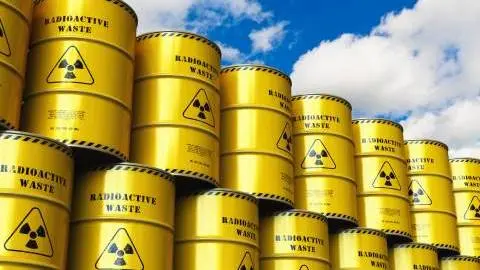Europe conflicted over role of nuclear and gas in future power system
The inclusion of nuclear and gas-fired power plants in the EU taxonomy depends on political choices about Europe’s future power system. Different countries take very different positions…
Gas and nuclear make up 42% of today’s European power mix
Gas and nuclear power plants play a pivotal role in Europe’s current power system. They each provide about a fifth of annual power generation, contributing a combined total of 42% of Europe's power mix today.
The future role of gas and nuclear power highly depends on political choices about Europe’s future power system. Nuclear power plants are usually very large and capital-intensive projects that take years to develop and built. To a lesser extent that also holds true for large-scale gas-fired power plants. Hence, these projects are only realised with strong political support.
Three scenarios for the future power system
Bloomberg New Energy Finance (BNEF) made this point vividly clear in its 2021 New Energy Outlook. BNEF defined three scenarios based on different political choices for power generation technologies in the global power grid. All three scenarios reach the 2050 net-zero emissions target and limit global warming to the Paris Climate goal of close to 1.5 degrees celsius. But they do so with different power-generating technologies.
Development of nuclear and gas-fired power plants under three scenarios for the power system in a net-zero economy
Scenario 1: gas-fired power plants with carbon capture and storage
In this scenario, power generation continues to rely on fossil fuel power plants, notably gas-fired power plants as most coal plants are phased out. Carbon Capture and Storage (CCS) is applied to reduce the emissions of gas-fired power plants. In this scenario, the global fleet of gas-fired power plants increases fourfold, but the fleet of nuclear power plants remains constant as gas-fired power plants provide baseload power and act as a backup in times when the sun is not shining and the wind is not blowing.
Scenario 2: nuclear power plants
In this scenario, most power generation comes from carbon-free nuclear power plants, requiring a fourteenfold increase in the installed capacity of nuclear power plants. Gas-fired power plants act as a transition fuel in this scenario. Installed global capacity of gas-fired power plants more than doubles up to 2035 to meet growing power demand, which cannot yet be met with nuclear power as it takes time to expend the nuclear fleet. After 2035, nuclear power becomes the main energy source and gas-fired capacity stays constant for a couple of years before it starts to decline.
Scenario 3: renewables with synthetic fuels
Renewables are the main energy source in this version of a net-zero economy. Synthetic fuels such as hydrogen or methanol provide a backup energy source to generate power at times when renewables cannot deliver because the wind is not blowing or the sun is not shining. Like in the ‘gas with CCS scenario’, there is no need for more nuclear power plants as ‘clean’ gas-fired power plants that run on synthetic fuels provide electricity when renewables fail to do so.
Of course, these three scenarios depict extreme worlds. In practice, it is likely that the transition towards a net-zero economy involves a mixture of renewables, synthetic fuels, CCS (Carbon capture and storage) and nuclear power.
Nevertheless, these scenarios clearly show that the development of nuclear and gas-fired power plants that meet the taxonomy’s criteria highly depend on policy and technological developments. Political choices play a crucial role. Think of long-term policy targets for the future power and energy system, subsidy schemes for the capital expenditure to build nuclear power plants (capex) or to cover the operational costs during the lifetime (opex), research and development budgets to foster innovation in CCS, small nuclear reactors and nuclear fusion, and public co-financing of CCS infrastructure.
So far, Europe is far from united on its future power system
The key insights from BNEF’s global energy transition scenarios also hold for continents and countries.
In Europe, the current focus is on increasing the share of renewables in power grids and on paving the way for synthetic fuels to act as a backup power source from 2030 onwards (BNEF’s renewables with synthetic fuels scenario).
According to the International Energy Agency, renewables account for 41% of today’s power mix in Europe, up from 24% in 2010. If this trend continues, gas and nuclear power are likely to play a limited role in the future.
But whether renewables and synthetic fuels can be the dominant power source of a net-zero economy is a topic of intense debate. The fact is that member states themselves design the policies that shape their future power systems. And they are far from united when it comes to the role of nuclear and gas-fired power plants.
In 2000, Germany reached an agreement with the four nuclear power plant operators to shut down the country's nuclear power plants after they had generated a certain amount of electricity (Atomkonsens). However, in 2011, shortly after the nuclear disaster in Fukushima, the Bundestag, the German federal parliament, decided to quickly shut down eight nuclear power plants and close the remaining nine at specific times (Atomausstieg). The last three nuclear power plants will be turned off by the end of 2022.
The new coalition brought forward the aim to close all coal-fired power plants from 2038 to 2030. Gas-fired power plants are likely to be needed during the phasing out of coal and nuclear power plants and the build-up of renewable capacity and a hydrogen economy. In the longer term, gas-fired power plants will also need to be phased out to reach a net-zero economy. Or abatement technologies like CCS should be installed.
France takes a very different stance. President Emmanuel Macron this month called for a ‘renaissance’ and ‘rebirth’ of the French nuclear industry to transition to a net-zero carbon economy. He aimed to start the construction of six nuclear plants by 2028 and called for the option to build eight more.
France is a nuclear powerhouse. As of today, a total of 56 nuclear power plants provide around 70% of France's power supply. But the fleet is old and currently 10 plants are closed for maintenance, down from 17 in 2021.
One new reactor is under construction in the northwestern town of Flamanville, but it has faced severe setbacks. It was supposed to be completed in 2012 at a cost of €3bn, but won’t open until at least 2023 with the bill ballooning to almost €13bn.
The French nuclear fleet is ageing
Age of nuclear power plants in France in years based on gigawatts of installed capacity

Gas-fired power plants are compliant with the taxonomy only if CCS is applied...
The taxonomy provides two criteria for gas being labelled sustainable. Here we discuss the first criterium which has to do with the life-cycle emissions of the gas-fired power plant. It implies that new gas-fired power plants can only be built if they apply the most advanced technology of CCS. We will discuss the second criteria in the next section.
From the technical screening criteria, it follows that the life-cycle emissions from gas-fired power plants must be less than 100 grams of CO2 per kilowatt-hour (g/kWh) in order to comply with the taxonomy. Life-cycle emissions provide good insights into the environmental impact of gas-fired power plants and other power sources as they apply a cradle-to-grave approach. This contrasts targets for direct or so-called end-of-pipe emissions (see next section).
Research by the UN shows that meeting the 100 g/kWh life-cycle target is quite a challenge. In fact, it is impossible for unabated gas-fired power plants without cogeneration that have carbon emissions of 400 to 500 g/kWh. It can be done by applying carbon capture and storage, but only under ideal conditions as emissions from abated gas-fired power plants range from 92 to 221 g/kWh.
Note, however, that gas-fired power plants that meet the technical screening criteria are ‘quite clean’. They produce ten times fewer emissions than unabated coal-fired power plants and four to five times fewer than unabated gas-fired power plants. They even come close to the emission levels of ‘the worst-performing' solar projects.
The carbon emission norm of 100 g/kWh is ambitious for gas-fired power plants, even those with CCS
Lifecycle greenhouse gas emissions in g/kWh of CO2 equivalents

…or if the energy content of gas is fully used
The second criterium of the taxonomy’s technical screening criteria is about the direct or end-of-pipe emissions of the gas-fired power plant. These should not exceed 270 g/kWh.
This too is quite a challenge to meet. Experts indicate that it only applies to gas-fired power plants that utilise the energy content of the gas inputs to the max. Think of the most efficient gas-fired combined heat and power plants (CHP plants) that use the residual heat and steam to increase the efficiency of the turbine. If the remaining heat is further utilised, for example by heating houses through low-temperature district heating grids (cogeneration), the norm might be met. This indicates that unabated gas-fired power plants can only be compliant with the taxonomy as long as the energy content of the gas inputs is fully utilised.
The inclusion of nuclear and gas-fired power plants in the EU taxonomy has kept the minds of many busy. And it is likely to do so as long as governments take a different stance on the role of nuclear and gas-fired power plants in their transition plans towards a net-zero economy.
Nevertheless, the EU taxonomy sets the bar high for these technologies. The norms for gas-fired power plants, for example, can only be met if the latest and least polluting technologies and system-integrating possibilities are applied. In that respect, the taxonomy takes a sustainability approach, even if these technologies are viewed by many as less sustainable compared to renewables.
This publication has been prepared by ING solely for information purposes irrespective of a particular user's means, financial situation or investment objectives. The information does not constitute investment recommendation, and nor is it investment, legal or tax advice or an offer or solicitation to purchase or sell any financial instrument. Read more
Download
Download article
18 February 2022
EU taxonomy: spotlight on nuclear and gas This bundle contains 2 Articles
